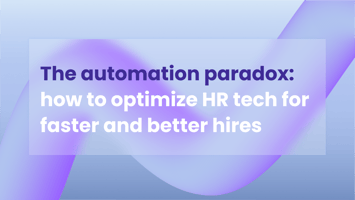The future of the SDR: Smarter, faster, and more strategic
The future of the SDR: smarter, faster, and more strategic
In many SaaS organizations, the Sales Development Representative (SDR) team is the engine behind growth. These professionals are responsible for identifying new leads, starting conversations, and filling the top of the sales funnel—often before a deal is even in sight.
They’re the first point of contact with potential customers, and they play a critical role in the success of your outbound strategy. But as AI becomes more embedded in sales processes, the SDR role is quietly being reshaped.
The short version? The change is big. The full story? Keep reading.
The time-consuming tasks are disappearing
The traditional SDR role is high-effort and high-volume. Hours are spent sourcing prospects, enriching lead data, writing emails, and following up—repeatedly. For years, outbound sales success depended largely on manual hustle.
But that’s changing. AI is now stepping in to automate much of this work. Not to replace SDRs, but to help them operate more efficiently and effectively. Think tools that:
- Automatically source, enrich, and qualify leads
- Generate personalized outreach based on online behavior and firmographic data
- Time follow-ups perfectly—without human input
And that’s only the beginning.
From executor to strategist
This shift doesn’t mean the SDR disappears. It means the job becomes more strategic. With AI handling much of the groundwork, SDRs can shift their focus toward:
- Analyzing buyer intent signals
- Identifying the right hooks for meaningful engagement
- Holding high-quality, personalized conversations that build trust and move deals forward
AI reduces the volume—but gives SDRs back something far more valuable: time to go deeper.
The human element still maters
AI can automate workflows, personalize messages, and time follow-ups—but it can’t build relationships. Great sales doesn’t just depend on data. It depends on people who can read between the lines, sense hesitation, shift tone, and ask the one question that turns interest into intent.
That’s where SDRs shine.
AI isn’t replacing the human touch—it’s making space for it. By clearing the noise, it allows SDRs to do what they do best: connect, adapt, and drive conversations that actually convert.
What this means for SaaS teams
For fast-scaling SaaS companies, this evolution changes the game:
- You can scale outbound efforts without instantly growing your team
- Outreach becomes more relevant, personalized, and better timed
- SDRs grow into strategic contributors—not just lead generators
But it also changes what to look for when hiring. Qualities like speed and charisma still matter, but now you’ll want curious, data-savvy, and analytical minds—people who can work with smart tools, not just around them.
What's next for your SDR team?
AI isn’t here to replace your people—it’s here to empower them. The real opportunity lies in redefining the SDR role: not as a volume machine, but as a strategic, data-enabled driver of conversations and growth.
The question now isn’t if the role will evolve. It’s how ready your team is to evolve with it.
Got a question or want to know how we can help? Reach out to Jasper – he’s here to help you every step of the way! ✨



